#bellwethers has such good imagery
Explore tagged Tumblr posts
Text
VALKENAER (Vertellend): Een eindeloze strip afzetlint hangt uitgerekt over de velden voor ons. Neongeel, ooit fel en nu hopeloos bezoedeld, op vaste intervallen in de grond geprikt. Hier en daar flappert het los. Oude bandensporen liggen in de aarde ervoor, spiegelend door regenwater. Iemand heeft een provisorisch altaar gebouwd aan de Raadselpook, God der Grenzen: drie kraaien, gespietst op ijzeren relingpalen die de grond in zijn geslagen. Het ziet er op een of andere manier wanhopig uit. De politie is hier geweest. Dat is duidelijk. En wat ze ook gevonden hebben achter het lint, ze vonden het niet nodig in de buurt te blijven. Ze hebben deze plaats bijna net zo snel als ze hem gevonden hadden, weer verlaten. Corver loopt op het lint af en rukt het weg met één simpele beweging, alsof ze een zwembad opent. We stappen over de grenslijn en we lopen verder.
CORVER (Vertellend): Na verloop van tijd komen we aan bij een scheef maar officieel-uitziend bord dat in de grond is gehamerd. Een laatste waarschuwing. Er staat: ‘EEN GOD HEEFT DEZE GROND GESCHONDEN.' 'KEER OM.’
#de zavelverzen#dutch#tsv#this one was a joy to translate#bellwethers has such good imagery#fanfic#gammijart
0 notes
Photo
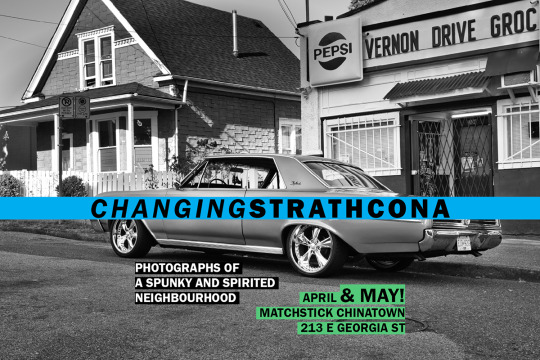
CHANGING STRATHCONA: MATCHSTICK SHOW
… So, it is late May, and on the windward side of the Coastal Mountains on the shores of the Salish Sea it is already Summer, really. It is almost Mediterranean, except for… I am not sure. But, we have it climatologically, geographically, and culinary good here. The mineral scent from spells of rain, the waves of blooming trees, and the wonderful blankets of clouds are making way for sweet garden flowers, dry pine air, and clear blue skies. That is, if you like that sort of stuff. It is all quite pleasant anyway, especially in the shade.
Also, it is nearing the end of our lovely little photo show, Changing Strathcona, at Matchstick Coffee Bar in Chinatown. We would like to thank again Matchstick manager Nic Campbell for the opportunity to show our photo work. And if you have not seen the show, I present our photographic appreciation of Strathcona below.
The Show

Our pretty photo show, Changing Strathcona, at Matchstick Coffee Bar in Chinatown.
Colin Trigg, Sharon Wish, and Dionysios (me) are Vancouver artists and photographers who have witnessed the changes to the urban fabric and vitality of Strathcona through the medium of photography over many years and even decades. Their interest and appreciation for this historical, bellwether neighbourhood, is shown through their personal photography and complimentary imagery.
Strathcona was the original East End and mixed-use neighbourhood, populated by working class immigrants and minorities. It is a spunky and spirited neighbourhood, having endured urban renewal crazes and misguided attempts to revise it with little consideration to human scale and culture. Throughout its history, its residents have shaped the neighbourhood on their own terms. So, this walkable, tree-lined “gabled city” has remained a vibrant neighbourhood with a strong sense of community.
Home to some of Vancouver’s oldest buildings, the neighbourhood is not just nice looking Victorian style homes but also an eclectic mix of inexpensive and posh bungalows and row houses, old apartment buildings and new affordable housing, original corner stores, garages and boring industrial buildings. And there is an incredible variety to see, such as weathered facades, unusual colours, manicured or wild gardens, all shapes of shingles, decorated or disorganized porches, lots of wooden clapboard and stucco, rare brick and stone, and gritty but lively alleys.
The Photographers

Les photographes sympathiques, Colin Trigg, Sharon Wish, et Dionysios.
Colin Trigg, in closing
Participating in the Changing Strathcona show at Matchstick Coffee was a first for me and it was both fun and educational. Despite many years of practicing photography, this event was my first opportunity to participate in a show where I could display some of my printed work to a general audience. I have fellow photographer Dionysios Psychas to thank for making it all possible this year. Dionysios, has successfully participated in many other shows (including past events at Matchstick) and he was an invaluable resource when it came to getting organized for this type of an event.
I was also pleased that we could highlight one of Vancouver’s most unique neighbourhoods and document its change over time. Strathcona is an eclectic, spirited and historic area full of many photographic opportunities. The people, the culture, the architecture, and the history make it a wonderful place to explore. I’ve spent a considerable amount of time walking its streets but this year it was different, as I approached each visit there with purpose. This year, the show, coupled with the photo walk gave me an opportunity to grow my skills and meet other passionate photographers also willing to explore.
I would like to thank Matchstick Coffee for hosting the show and I look forward to finding more ways to display my work to a wider audience in the future.
Changing Strathcona by Colin Trigg
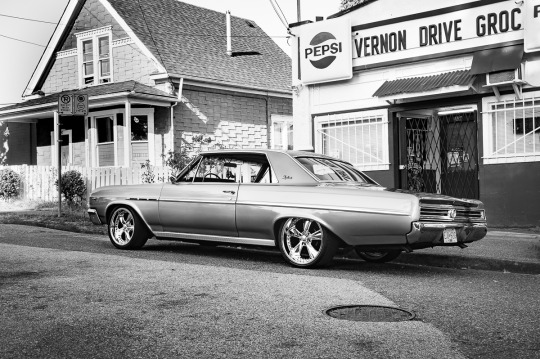
//

//
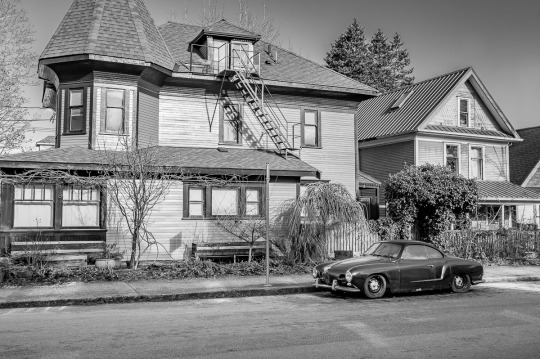
//

//

//

//
Colin Trigg is a passionate photographer with “a west coast state of mind”. He often finds himself in search of moments, when an unusual subject appears, the light changes towards the dramatic, or the mood of the mundane elevates to something truly extraordinary. Colin approaches photography as a seeker of beauty and light illuminating the natural and the built environment.
Focussing primarily on urban, landscape, and street photography, Colin explores the city streets, and the province’s beaches and forests, to discover what makes each one of them special. The art of photography for Colin is as much about the process as it is about the result. Each step of the way, there are lessons to be learned, moments to savour, people to bond with, and challenges to overcome. Completing these steps helps him become not only a better photographer but also a better person. This in turn promotes a sense of well-being and gratitude.
Colin also encourages others to participate, explore the world, contemplate what makes it special and then capture it with your heart and your camera.
Please visit Colin's website — colintrigg.myportfolio.com — to see more of his extraordinary photography.
Sharon Wish, in closing
Well that was fun!
Right from the moment the idea was born I was very excited about this project, and being involved with my two collaborative photographer colleagues, made this extra special for me.
Being able to immerse myself into photographing a neighbourhood that I wasn’t really all that familiar with was a wonderful challenge, and I personally got a lot out of. Imagining the great images to be discovered in this historical neighbourhood and seeing how it has changed, and what has remained the same. It was fun to imagine Fred Herzog back in the 1950s '60s and '70s taking photos in the same streets I was walking, and also taking photos. That in itself was one of the biggest joys for me.
The collaboration itself was rewarding — sharing our images and seeing how they meshed together for the exhibition at Matchstick was so interesting, because it was great to see how we all saw Strathcona in our own unique way. Watching the show come together as the prints were hung on the wall, telling a story of the past, present and future.
It was great being able to be part of the Capture Festival with our photowalk through this neighbourhood — the rewards were great as people enjoyed themselves, and also discovered some hidden gems.
Overall, such a great and fun experience! I hope we can do something similar next year, as I feel it’s so important to document things in our city, as it is changing so quickly.
Changing Strathcona by Sharon Wish

//

//
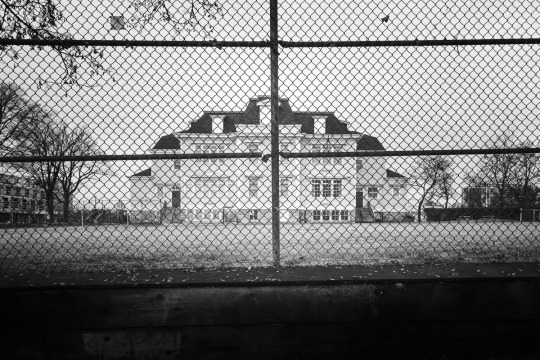
//

//

//

//
Sharon Wish is a self-taught photographer born and raised in Vancouver, Canada. She became interested in photography as a teen and was immediately intrigued by the world of black and white. Sharon practices street, urban landscape, and natural landscape photography.
She likes that element of mystery in her photographs: someone on the street, coming out of the shadows or emerging from the fog on those moody Vancouver days. Being drawn to shapes, shadows, and silhouettes in the urban landscape, she naturally gravitated toward street photography.
Sharon looks for that single figure to add that touch of intrigue and dreamlike quality. She sees herself in her compositions as that single person lost in the melancholy of the scene and creating a story of being all alone in a city that is constantly changing. She strives to make her images not just something visual, but also something felt.
Please visit Sharon's website — sharonwish.com — to see more of her mysterious photography.
Me, Dionysios, in closing
I first heard about the monthly art shows at Matchstick Chinatown thru artists who exhibited there a couple of years ago. I liked that Nic wanted to support the local artist community by creating a cozy space for them to display their work. And was really glad he was open to my photography work last year, so I jumped at the chance.
Working on getting one's art work noticed or exhibited is, as any working artist will tell you, a lot of work (I won't get into the particulars here), formal when it concerns galleries, and expensive. I am not a working artist. (Surprise, I am an architect and far from retirement; it's fine.) So, for me, for now, doing such small shows, the effort is easy, the project is casual, and it is a good, small, fun step forward. I am of middle-age now, and have been making an effort to share my photo work.
The Capture Photography Festival has been fun to participate in as a viewer. It has wonderfully diverse camera based works, unlike what I do, and they are unexpected, impressive, and inspiring. I am glad there is such a festival in Vancouver. In Montreal, I had enjoyed Le Mois de la Photo and the World Press Photo Exhibitions (not in Vancouver yet!) for many years. So, it is very nice to experience a photography festival here because it is in an art form I enjoy practicing and is a very important pursuit to me. And to lead a participating event is fun and good for me. I feel I am contributing something of value to the festival and to others.
I think I do photo walks pretty good, because I have been organizing and leading them for the last ten years and people still like them; I am glad for that. Moreover, I really enjoy doing photo walks, and that is what I can contribute for now. I am not ready to submit for the Capture Selected Exhibitions for practical reasons, but not emotional reasons, not anymore. I will write about fears and working on my art in a future post.
For the photo show and photo walk I chose Strathcona because, like Chinatown which I did last year, it is a unique neighbourhood in Vancouver and very photogenic to me. I much like the mix of building types, styles, and states; a varied urban fabric. As well, they have interesting histories to learn about and share. But to be fair, parts of Grandview-Woodland and Mount Pleasant have a similar vibe and are also photogenic in those ways I like. So, next year, I suspect the Capture photo walk will be in one of those neighbourhoods. Stay tuned! Be notified of future photo walks by subscribing to my newsletter.
Otherwise, I am currently working on new prints for my shop, always working on photographing dead leaves, all those aspects of art making which I will write about in a future post, and decorating my flat with sets of little prints. My slow-going, big project is making an extra large print — like 6' x 4' — to hang in… I do not know; I do not have any more wall space in my flat. But, that would be something!
Changing Strathcona by Dionysios Psychas

//
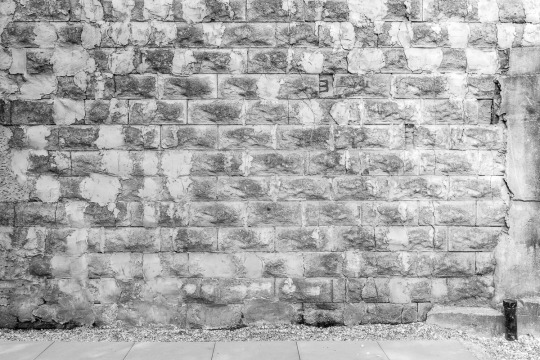
//

//

//

//

//
A self-taught art photographer, I have been practising photography since my late teens. I make photographs because I very much like cameras and the medium, but especially because I like to create something meaningful. Importantly, I appreciate that photography is a calming vehicle. Focusing on a frame and a vision is meditative in a sense. It is grounding and lightens my spirits.
I am inspired by the artwork of painters Mark Rothko, in which the relationship between colours evokes a strong emotion, and Georgia O’Keeffe, in which simple gestures are powerful, as well as photographer Edward Weston who elevated form. I am also influenced by graphic design and architecture, where organizing form and space produces a distinct experience. So, with these drives, I believe forms can carry meaning with which I can create a meaningful photograph.
You can see more of my contemplative photography by visiting the links to projects West Coast Meditations and The Photogenic City.
So, how about you; did you see our photo show? What did you like about it? Send me an email and tell me what you think.
DP, 2023-05-27
Are you getting value out of the photo walks and the blog? If so, you can help support these by sharing them with others or thru the Buy Me A Coffee link below. Think of it as a tip jar and an easy way to say thanks. Thank you for your support, I sincerely appreciate it! Merci beacoup!

0 notes
Text
Dissertation
Ideas: To start this part of the project I made some ideas that related to the 3 animation ideas in some way. Those ideas were:
How mothers are portrayed in media
Anthropomorphic animals in media
Animated game adverts
Video Game cutscenes
Animations with no speaking
Final idea: Out of the 5 ideas I decided to develop further I went with “Anthropomorphic animals in media” as I can easily link it to my chosen animation idea as well.
Broadening the idea into an open question I ended up with “Why are anthropomorphic animals used to depict stereotypes?” I will be looking into how people use the imagery of animals to push their message or to show purposely or not their own opinions.
Research: I will be looking at various examples of different types of media using animals that either show racist stereotypes or use them for a political message.
Examples using racism:
The Aristocats (1970) Among the members of the alley cats there is one named Shun Gon who plays the piano and displays racist stereotypes with his slanted eyes and buck teeth, the lyrics he sings purposefully mocks Chinese people.
Dumbo (1941) The crow characters were made to reference racist minstrel shows and all the characters are voiced by white actors. The leader of the group is called Jim Crow which was the name of the law that enforced racial segregation which was still happening at the time of the film's release. There were also racist lyrics aimed towards the black workers at the circus.
Lady and the Tramp (1955) The siamese cats suffer the same treatment as the aristocats as they have slanted eyes and buck teeth. The song they sing is purposefully made to have a Southeast Asian melody, the characters are voiced by a white actress who uses a fake accent for the characters.
Fritz the Cat (1972) The characters that are meant to represent black people are shown as crows once again referencing the Jim Crow law.
Kimba, the White Lion (1965) In the 1965 anime adaptation Leo/Kimba aims to bring aspects of western human culture to the animals of Africa changing their way of life for the “better” in a way that comes uncomfortably close to how westerners tried to convert other peoples to be like them. The manga and one of the anime series also contains various examples of racist depictions of black people and a disrespectful approach to the people of Africa.
Zootopia (2016) The predator and prey animals are turned against one another due to the fear spread by the media. The predator animals are feared as the population believes in the theory that they can turn “savage” at any point but never think that a prey animal could. The movie has a more positive message relating to the subject as it makes it clear that the way the predator animals are treated is bad.

Examples relating to politics:
Squirrel and Hedgehog (1977) a propaganda cartoon where the good guys are all squirrels, hedgehogs and ducks (animals viewed in a positive light) and live in a perfect society, meanwhile the antagonists are all weasels, rats and wolves (animals used for negative imagery) and they seek to destroy the good guys (there are a lot of hints to which each animal is meant to represent in real life).
Fritz the Cat (1972) The police are depicted as pigs (a commonly used animal used for someone viewed as evil and greedy).
Animal Farm (1954) Was made to be anti communism so they chose to depict the people in power as pigs.
Dinner For Few (2014) The upper class are shown as pigs while the lower class are mewling cats begging for scraps of food.
Zootopia (2016) The true villains of zootopia are a group of sheep who take orders from Bellwether (also a sheep) which might reference the insult of calling someone a sheep because they don’t question their leader and accept their opinion as fact. Zootopia also makes use of existing animal stereotypes to hint towards how people are discriminated against in real life.

Relevant research links: Disney acknowledging racism in their old mediahttps://storiesmatter.thewaltdisneycompany.com/
Why we say people are like a certain animal https://theconversation.com/why-its-so-offensive-when-we-call-people-animals-76295
Writing about squirrel and hedgehog https://tvtropes.org/pmwiki/pmwiki.php/Animation/SquirrelAndHedgehog
Kimba the white lion racism https://www.youtube.com/watch?v=EyDVJ-Uu8Oc
What I will cover in my dissertation:
How humans have given characteristics to animals throughout history.
What anthropomorphic animals are.
Explaining how political media uses imagery associated with animals to push their message.
Explaining how people put racist human stereotypes onto an animal and how it is bad when found in children's media. I will also explain how it can be used to push a more constructive message.
I would also look at some examples of how racism was depicted outside of animal characters are it was very prevalent in older media.
Say what we should do with this media in the modern age and how we can learn and move away from it.
2 notes
·
View notes
Text
Does Zack Snyder’s Army of the Dead Trailer Tease a Zombie Sex Scene?
https://ift.tt/3tf3SQg
The imminent arrival of Zack Snyder’s Army of the Dead will unleash an all-new film from the Justice League-restoring director, this one a return to the zombie wheelhouse that skyrocketed his career with 2004’s masterful Dawn of the Dead remake. While the upcoming film was always expected to manifest as a light-hearted madcap actioner—following a tactical team’s attempt to haul a fortune located within a zombie-overrun Las Vegas—the latest trailer spotlights the shocking intelligence of the film’s undead horde; intelligence that seems to include an organized hierarchy and, yes, zombie sex. Do we have your attention?
“They’re not what you think they are. They’re smarter, they’re faster, they’re organized.” The revelatory trailer line, delivered by Nora Arnezeder’s character, is complemented by startling montage imagery, showing Vegas’s decomposing denizens in a meeting of some kind, seemingly waiting for the onstage arrival of a ghoulish leader—who’s clearly embracing a sense of style, rocking a robe and using a cane. However, a sartorially sultry female zombie—shown earlier in the trailer—is also shown standing prominently on the dais awaiting the undead alpha, at which point a quick closeup shot teases that they’re about to engage in a sensuously passionate kiss! Thus, a prospectively shocking scene might be set up for the film, potentially defining its franchise aspirations, with a prequel movie and anime series already on tap.
While the Army of the Dead trailer’s teasing of a zombie kiss—one that even cuts away before the locking of decomposing lips—is not exactly inherent evidence of a sex scene, viewers would be well-advised to prepare for such a development. After all, the film is R-rated, and Netflix will be its primary platform of distribution, notwithstanding some limited theatrical showings. Indeed, a significant portion of Netflix’s original content tends to embrace the graphically gratuitous freedoms yielded by the platform’s status as a streamer. It has been a hard-learned lesson for casual viewers who thought Bridgerton was simply a PBS-esque period piece charming enough to watch with their families. Even rescued Fox network supernatural crime procedural Lucifer obligatorily unleashes occasional bits of nudity for its Netflix seasons—you know, because Netflix.
Moreover, shocking sex scenes (at least featuring the living,) aren’t even unprecedented for Snyder, whose last R-rated outing was 2009’s grandiose graphic novel adaptation, Watchmen, which notably contains a movie-sidetracking sex scene between Patrick Wilson’s Nite Owl II and Malin Ackerman’s Silk Spectre II. That scene could be accurately described as a quasi-artistic action sequence with nudity, flames and awkwardly uninterrupted shots of thrusting. While Snyder’s mostly-panel-for-panel adherence to Alan Moore’s bellwether graphic novel is often cited by proponents of the movie, the sex sequence it adapts from the source material was notably subtler. Thus, viewers who are only familiar with the iconography-imbued moroseness of Snyder DC movies like Man of Steel, Batman v Superman: Dawn of Justice and the recent redux of Justice League could be in for a rude awakening with Army of the Dead, since a version of the director unrestrained by Warner Bros. sat at the helm this time around.
Read more
Movies
How Zack Snyder’s Army of the Dead Could Nod to Night of the Living Dead’s Greatest Mystery
By John Saavedra
Movies
Batman v Superman Writer Describes Post-Release “Mood of Fear”
By Mike Cecchini
The other major takeaway from Army of the Dead’s latest reveal is the trailer-punctuating presence of a zombie tiger! Unlike some other zombie apocalypse franchises—specifically ones touting the titular ambulatory status of the dead—the reanimation process in this universe also affects animals. While such a concept might be seen as good news to fans of harmless, pocket-sized pets, it would be potentially devastating if one encounters a continent-dispossessed undead carnivorous cat. With Siegfried Fischbacher, the last survivor of iconic Vegas tiger tamer act Siegfried and Roy, having passed away this past January, the presence of a zombiefied bone-exposed Bengal almost serves as a thematically heartfelt tribute to both its city setting and the late duo.
Netflix
Of course, the crux of Army of the Dead, its plot-centric heist, will bring action-ready star Dave Bautista flanked by a new rough-around-the-edges ensemble of “a-holes.” The trailer (when not teasing zombie sex,) shows Hiroyuki Sanada’s role as a shady client, providing expository dialogue about a vault hidden deep beneath the Vegas Strip containing a cool $200 million (contextually, Elon Musk’s new Vegas loop commuter tunnel only cost $52.5 million). Of course, said team will have to go through an entire legion of the aforementioned horde of evolved, apparently-horny zombies, who, in Snyder-evocative fashion, very much “live in a society” in every sense of the word. Indeed, this array of undead denizens have seemingly settled in Las Vegas quite well, and clearly won’t take kindly to this cheeky coterie’s Ocean’s Undead act to steal hidden treasure from the flashy fiefdom of their proverbial king and queen—who, again, might just get busy onscreen. Rest assured, dear readers, this is just an educated prediction, not a personal wish.
cnx.cmd.push(function() { cnx({ playerId: "106e33c0-3911-473c-b599-b1426db57530", }).render("0270c398a82f44f49c23c16122516796"); });
Zack Snyder’s Army of the Dead premieres on Netflix (and select theaters) on Friday, May 21.
The post Does Zack Snyder’s Army of the Dead Trailer Tease a Zombie Sex Scene? appeared first on Den of Geek.
from Den of Geek https://ift.tt/2OLqRmR
1 note
·
View note
Text
9. Isle of Dogs

It’s an urgent call to resist Fascistic fear-mongering starring claymation dogs. It’s anti-propaganda, deeply empathetic and pro-love. Nearly every one of its characters contains depth, nuance, humor and pathos. And it’s set in Japan both as a tribute to the nuclear-unease era monster movies that flourished there in the middle of the last century, and as a grim comic commentary on the accidents of history that have led America to commit xenophobic atrocities under the cover of our own exceptionalism.
These are some of the things I believe about ISLE OF DOGS, but when it was released in March - all that was obscured by another, entirely-worthy debate about its aesthetic. The film was co-conceived and written by a prominent Japanese designer, but its lead author is clearly Wes Anderson. So does he, as a white American (a Texan, no less) have the right to traffic in the imagery of another culture? Even if he chose to utilize Japan’s iconic cinematic tropes out of love - is imitation an inherently colonial impulse?
It’s an undeniable good that we’ve arrived at a cultural moment where those questions are constantly being asked. But in this case, I think the conversation served to obscure, rather than illuminate, the art object being discussed. For example, the choice to “Americanize” the dogs, even as most of the humans in the film speak Japanese, strikes me as an effort to illuminate the communication gap that often allows the powerful to “otherize” their victims, by eliminating their voices from the conversation. I also think the way the movie’s one American character - Tracy, voiced by Greta Gerwig - takes credit for the ingenuity of our heroic lead human - Atari, voiced by Koyu Rankin - is meant as a pointed satire of the western self-absorption Anderson has been accused of.
It’s also true - although not exclusively so - that many of the film’s defenders are, in fact, Japanese. And many of those condemning it are not, although they seem to feel qualified to speak for Japanese people. As if the way the movie made them feel is a bellwether for how it must, they think, make Japanese people feel.
I’m obviously no more qualified to understand the depths of this debate than those writers are. And maybe I’m inclined to be generous to ISLE OF DOGS because of my love for its characters, or its wry humor. Maybe my love for dogs is obscuring my faculties. It could be as simple as that.
But the more I think about it, the more I’ve come to believe the movie and its critics are on the same side. That they share the same urgent anti-colonialist message. And that time will be kind to ISLE OF DOGS.
0 notes
Text
Some PlashMill Press book covers.
When you navigate the minefield of becoming a published author, one of the most important things to remember is this: a good, classy cover design that speaks to the content of the book is essential.
In today’s competitive retail market, good cover design must be as effective and eye-catching in all the digital or e-book formats as it is on the shelf of a conventional store. Potential readers are exposed to a book’s cover design for only a few seconds before moving on, so it must be strong enough to engage them, involve them, and lead them towards the purchase.
In other words, you need a good designer.
If you’re trying to do all of this yourself, which is a lengthy task that requires courage and commitment, then you should know that the cover design is one of the areas where self-publishers in particular — but even large publishing houses — fall down flat. Be honest with yourself: are your graphical skills at the level of someone who has trained for years and then spent many more working successfully in publications and graphic design? Is it worth the risk of your book failing, with all that you have invested in it, to save a relatively small amount of money on cover design? It seems at best a false economy.
Competition: your book is not alone on the shelf
Your book will be in direct competition with others that do benefit from investment in good cover design. It will compete alongside them for the same readers, who perhaps glance at the cover for a few seconds. If they move on, you’ve lost the sale before they even read the marketing blurb. Think about that. In terms of marketing individual books to buyers, nothing is more important than the cover.
Your book has certainly taken months, maybe even years to write. Why risk wasting all of that?
PlashMill Press considers high quality professional cover design to be one of
the most important aspects of book preparation. The most elegant typesetting and precise editing is dependent, for its impact, on people actually picking up the book and reading it.
We work with authors and marketers to improve cover design
When we design a cover, we take into account the content and target market of the book itself. We discuss the best approach to take to cover design in the broader context of marketing. What’s the target market? Is geography important? What’s the subject area? What other interests are potential buyer likely to have, that we might exploit in our design?
When we are working on a series of books we male sure that there is strong visual consistency in terms of colours, palettes, typography, typefaces and imagery. Sometimes we use purchased images and sometimes those that authors themselves can supply. We strongly encourage authors of memoirs, or of factual books, to supply as many relevant pictures as they can. (Specifications available on request.) Often, however, we will commission or execute photography ourselves.
Cover design, like everything we do, is a matter of consultation and cooperation with authors. We do reserve the right to a final say but we always listen to authors’ input. One humorous example was when an author, whose book was otherwise acceptable, tried to insist that, prominent in the cover design, should be an image of a naked couple running hand in hand along a beach. We rather felt we had to decline!
Authors and retailers like our designs
The Tobacconist, Jennifer Dalmaine
Humour aside, such eventualities are rare however. In nearly all cases, our designs are liked by authors and reviewers. They also gain strong approval from retailers as well as buyers. Retailers are always the bellwether of success in terms of customer approval; after all, they have the job of selling books to as many individuals as possible. Buyers only think in terms of their own preferences while retailers see the broader picture of trend appeal.
We have always had a reputation for powerful cover designs. This post shows you some of our successful designs from the last ten years. Naturally, we put as much care into all our covers as we did into these.
If you have any queries, please contact us using the form at the foot of this page. All queries are confidential.
Covers for Rod Fleming
#gallery-0-7 { margin: auto; } #gallery-0-7 .gallery-item { float: left; margin-top: 10px; text-align: center; width: 33%; } #gallery-0-7 img { border: 2px solid #cfcfcf; } #gallery-0-7 .gallery-caption { margin-left: 0; } /* see gallery_shortcode() in wp-includes/media.php */
Poaching the River
The Warm Pink Jelly Express Train
The Spring Run
French Onion Soup!
Why Men Made God
A Kiss for Christmas
The Children of Aldebaran
Croutons and Cheese!
A Little Shop of Horrors
Other Authors
#gallery-0-8 { margin: auto; } #gallery-0-8 .gallery-item { float: left; margin-top: 10px; text-align: center; width: 33%; } #gallery-0-8 img { border: 2px solid #cfcfcf; } #gallery-0-8 .gallery-caption { margin-left: 0; } /* see gallery_shortcode() in wp-includes/media.php */
The Tobacconist, Jennifer Dalmaine
A Boy’s Own Offshore Adventure, Brian Page
A Boy’s Own Oily Adventure, Brian Page
Silver Threads, Tom Ralston
It Began With A Letter, Liz Strachan
A Boy’s Own Mining Adventure, Brian Page
Dubs – How The Oil Came North, John C Milne
A Boy’s Own Wartime Adventure, Brian Page
Bodies Politic, David Wishart
The Trip, Vin Byrne
Dummies, Tom Keenan
Jean Winter-Main, Dan Hood
[contact-form] Cover design is essential to successful publishing – PlashMill Press When you navigate the minefield of becoming a published author, one of the most important things to remember is this: a good, classy cover design that speaks to the content of the book is essential.
0 notes